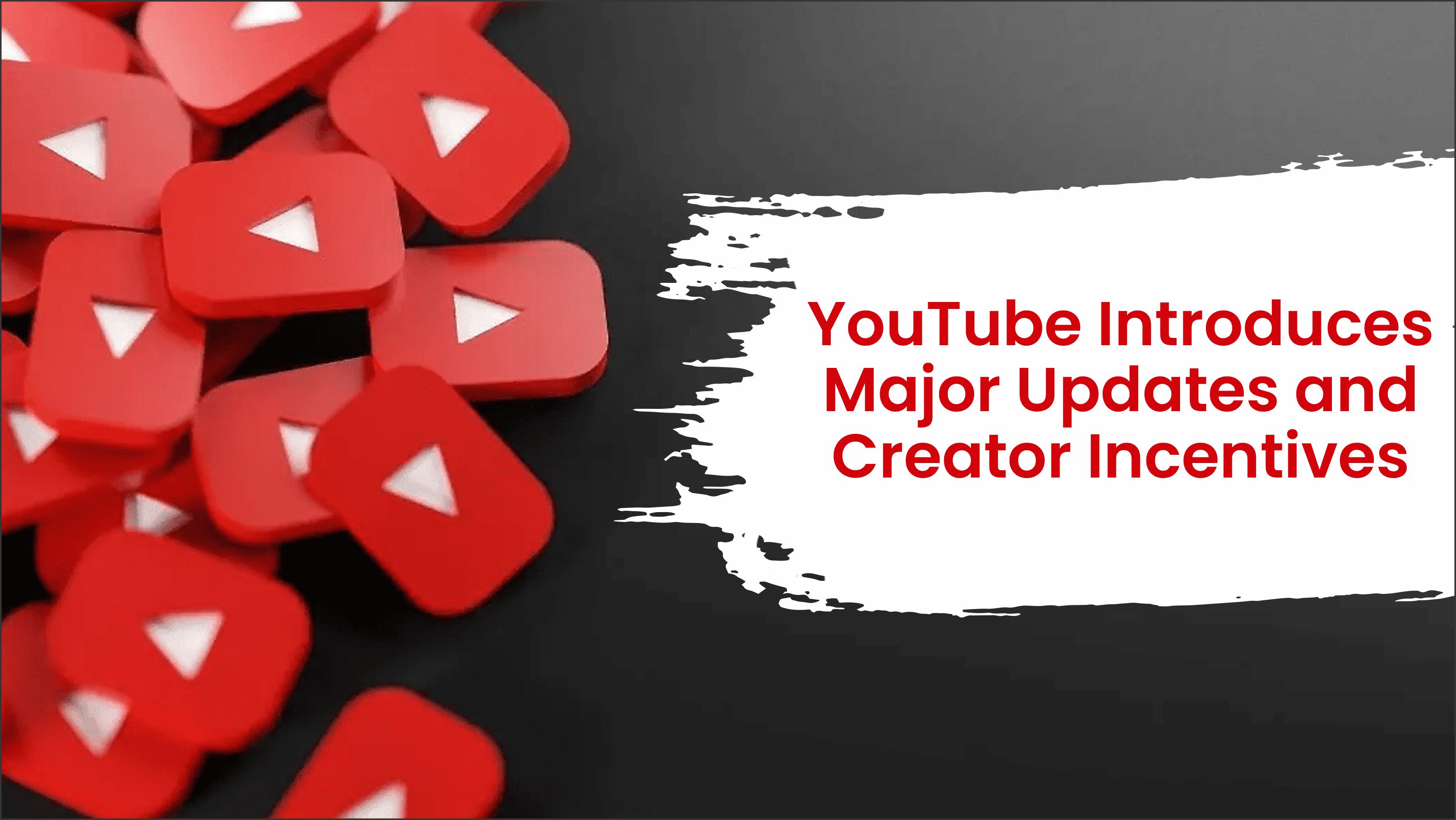
May 17, 2024 – YouTube has announced several significant updates aimed at enhancing the platform for both viewers and creators. These updates, revealed at YouTube's annual Brandcast event, include new features, expanded monetization options, and strategic partnerships designed to keep YouTube at the forefront of digital content creation.
One of the most exciting announcements is the introduction of enhanced video editing tools directly within the YouTube app. These tools are designed to provide creators with more flexibility and creative control without needing third-party software. This move is expected to streamline the content creation process, making it easier for creators to produce high-quality videos on the go (blog.youtube).
Additionally, YouTube is rolling out improved analytics capabilities. The new analytics dashboard will offer more detailed insights into audience behavior, helping creators better understand their viewers and tailor their content accordingly. This update is anticipated to be a game-changer for content creators who rely on data-driven strategies to grow their channels (SABC News).
In a bid to support creators financially, YouTube has expanded its monetization options. The platform is now offering more opportunities for creators to earn through memberships, super chats, and merchandise integrations. This expansion aims to provide creators with diversified revenue streams, reducing reliance on ad revenue alone (GMA Network | News and Entertainment ).
Moreover, YouTube has introduced a new tier of premium content subscriptions. This feature allows creators to offer exclusive content to subscribers who pay a monthly fee. This initiative is expected to encourage more creators to produce high-quality, exclusive content and enhance viewer engagement by offering premium viewing experiences (blog.youtube).
YouTube has also announced new partnerships with major entertainment and media companies to bring more professional content to the platform. These collaborations are part of YouTube's strategy to blend user-generated content with professional productions, catering to a broader audience and enhancing the platform's content diversity (SABC News).
Furthermore, YouTube's commitment to educational content has been reinforced through new partnerships with educational institutions and content creators. The platform aims to become a hub for learning, offering a wide range of tutorials, courses, and educational videos across various subjects (GMA Network | News and Entertainment ).
Recognizing the challenges faced by content creators, YouTube is launching new initiatives focused on mental health and well-being. These initiatives include resources and support systems to help creators manage the pressures of content creation and maintain a healthy work-life balance. This move underscores YouTube's dedication to fostering a supportive and sustainable environment for its creators (SABC News).
YouTube is also enhancing its community features to foster better interaction between creators and their audiences. New tools for live streaming, community posts, and interactive polls are being introduced to help creators engage with their fans in more meaningful ways. These tools are designed to build stronger communities and enhance the overall viewer experience (blog.youtube) (GMA Network | News and Entertainment ).
YouTube's latest updates and initiatives demonstrate its commitment to remaining a leader in the digital content space. By introducing advanced tools, expanding monetization options, and fostering strategic partnerships, YouTube is setting the stage for continued growth and innovation. These changes are poised to benefit both creators and viewers, ensuring that YouTube remains a dynamic and versatile platform for years to come.
For more detailed information on these updates, visit the official YouTube Blog and stay tuned for further announcements as these features roll out globally.
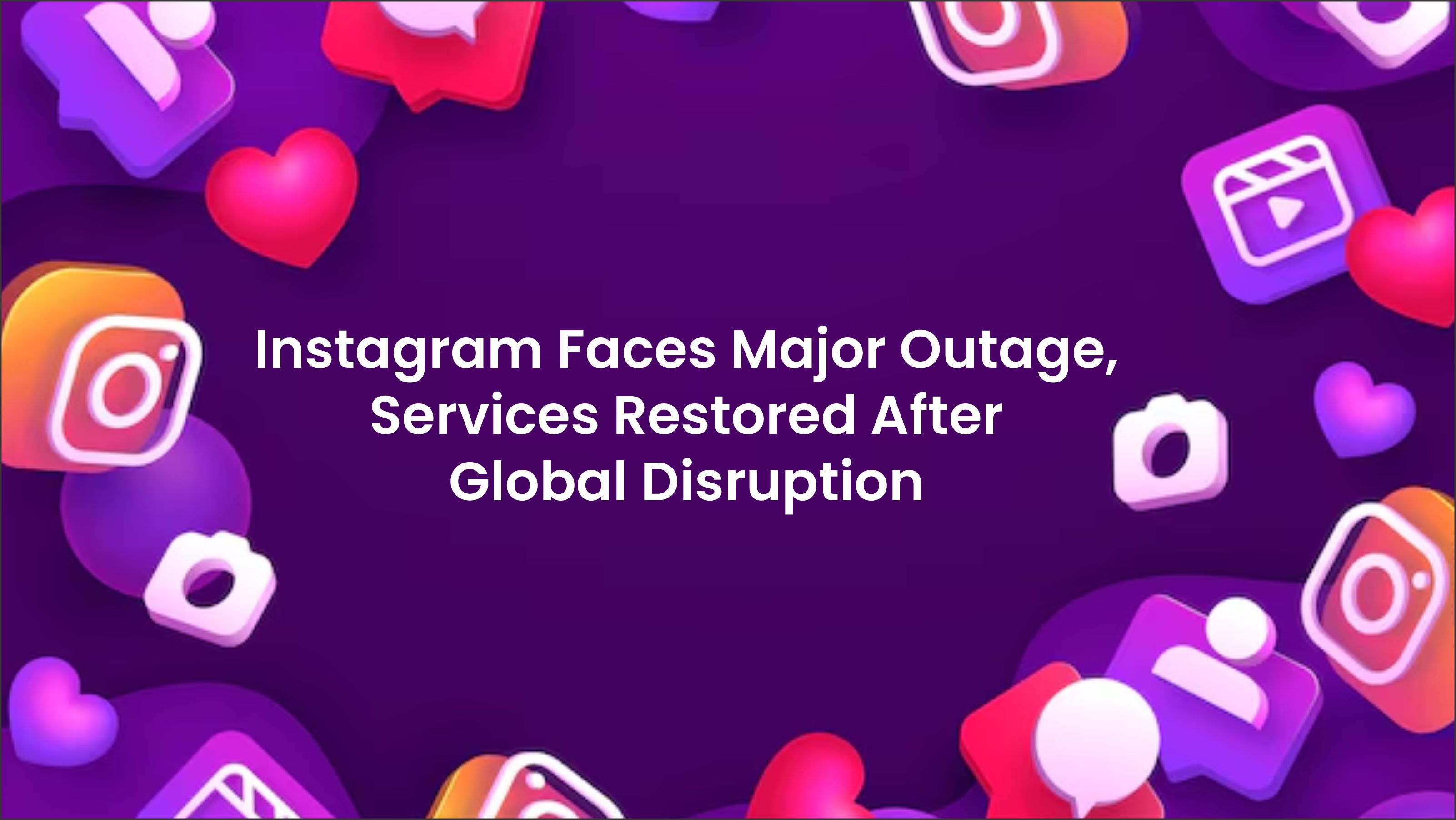
Instagram, along with other Meta-owned platforms including Facebook and WhatsApp, experienced a significant global outage recently. This disruption affected millions of users worldwide, causing widespread inconvenience and sparking concerns over potential security breaches.
On the evening of May 15, 2024, users began reporting issues accessing Instagram, Facebook, and WhatsApp. Many users were suddenly logged out of their accounts and prompted to change their passwords, leading to fears of a possible cyber attack or hacking attempt. According to Downdetector, a website that tracks outages, there were thousands of reports from users experiencing difficulties with these platforms (Hindustan Times) (India TV News).
Meta, the parent company of these social media giants, quickly acknowledged the problem. Andy Stone, a spokesperson for Meta, addressed the issue on X (formerly Twitter), stating, "We're aware people are having trouble accessing our services. We are working on this now." Stone later confirmed that the issue was resolved and apologized for the inconvenience caused (mint).
The outage, which lasted several hours, was eventually resolved by Meta’s technical team. By late evening, services began to be restored, and users were able to log back into their accounts. Meta assured users that the disruption was due to a technical glitch rather than any malicious activity. Stone emphasized that the company had worked swiftly to fix the problem and prevent further disruptions (Hindustan Times) (mint).
This outage had a significant impact on both individual users and businesses that rely on Instagram and Facebook for their operations. Influencers, small business owners, and marketers, who depend on these platforms for engagement and sales, found themselves temporarily cut off from their audiences. The inability to access accounts and post updates meant a loss of potential revenue and interaction during the downtime.
For many businesses, particularly those in e-commerce, Instagram and Facebook are critical tools for customer engagement and sales. The disruption highlighted the vulnerabilities of relying heavily on a single platform for business operations. As a result, some businesses are considering diversifying their digital presence to mitigate the risks of future outages (Hindustan Times) (India TV News).
The outage led to a flurry of activity on other social media platforms, particularly X, where users flocked to confirm whether they were alone in facing these issues. Hashtags like #InstagramDown and #FacebookDown quickly trended as users shared their frustrations and humorous takes on the situation. Some users expressed concerns over potential data breaches, with many fearing that their accounts might have been hacked (mint).
Meta's quick response helped alleviate some of these fears, but the incident served as a stark reminder of the dependence on digital platforms and the need for robust security measures. The company reassured users that there was no evidence of a cyber attack and that the prompt logout requests were a precautionary measure to ensure account security during the technical glitch.
In the aftermath of the outage, Meta has reiterated its commitment to improving the stability and security of its platforms. The company is investing in better infrastructure and enhanced technical support to prevent similar incidents in the future. Additionally, Meta is working on new features aimed at providing users with more control over their account security and data privacy.
One of the recent updates includes stricter message settings and enhanced privacy features for teenagers on Instagram and Facebook. These measures are part of Meta's broader initiative to create safer online environments, particularly for younger users. By adding new policies and settings, Meta aims to limit the exposure of sensitive content and reduce the risks associated with online interactions (Facebook).
The recent global outage of Instagram and other Meta platforms underscores the critical role these services play in everyday communication and business operations. While Meta has managed to restore services and address the immediate concerns, the incident has highlighted the need for continuous improvements in platform reliability and security. Users and businesses alike are reminded of the importance of diversifying their digital strategies and staying informed about the security features provided by these platforms.
As Meta continues to enhance its services, users can expect more robust and secure platforms designed to handle the increasing demands of a digitally connected world
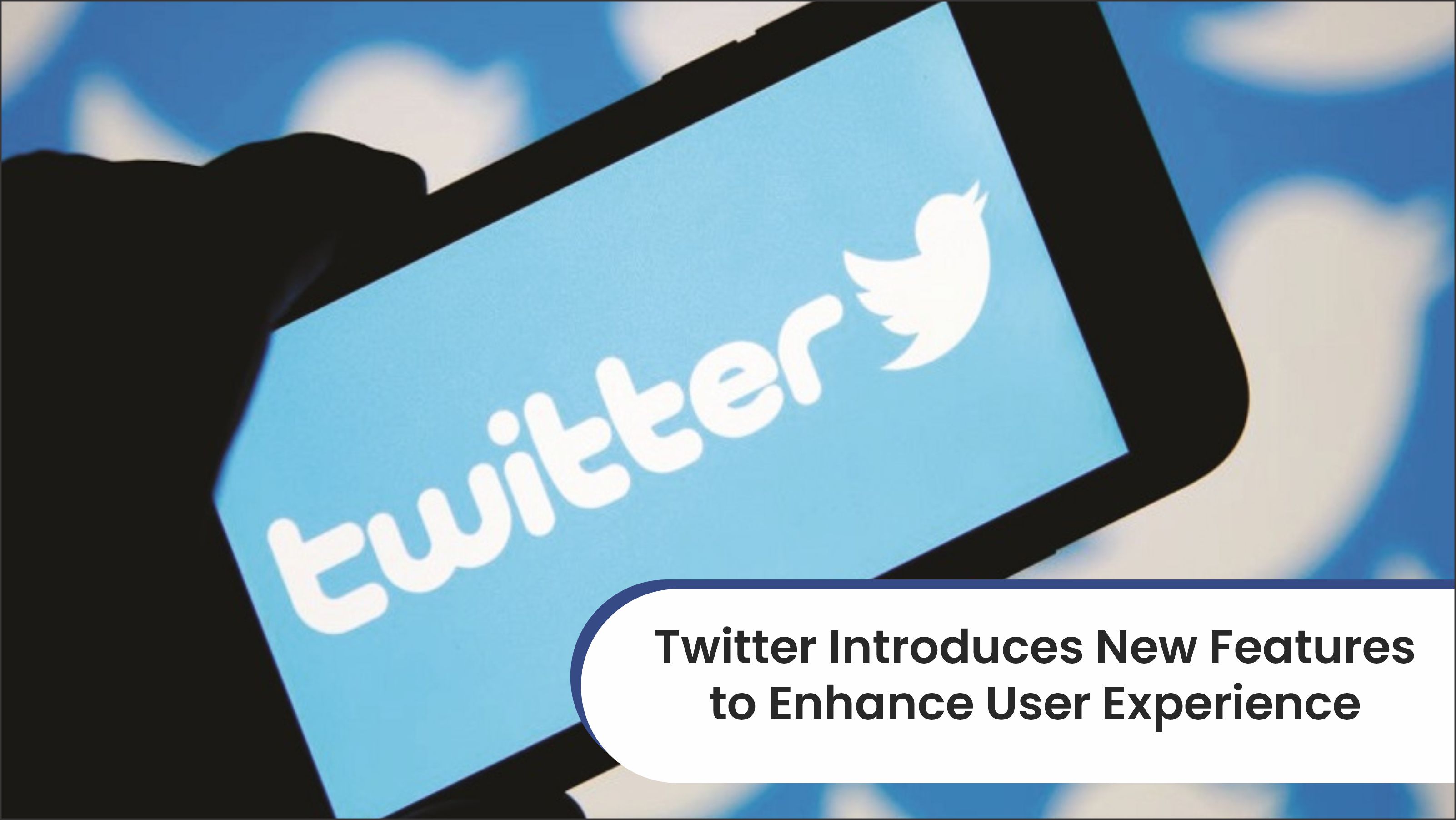
In a significant move aimed at enhancing user engagement and platform functionality, Twitter has rolled out a suite of new features. These changes are designed to improve the overall user experience and keep the platform competitive in the dynamic social media landscape.
Twitter has introduced advanced search filters, allowing users to customize their search results more precisely. This feature enables users to find tweets and topics relevant to their interests more efficiently. The new filters include options for specifying date ranges, exact phrases, and hashtags, which help users navigate through the vast amount of content more effectively.
Amid growing concerns over online security, Twitter has implemented robust measures to protect user data and enhance privacy. These include two-factor authentication (2FA) improvements and more stringent verification processes for high-profile accounts. The platform's commitment to security aims to safeguard users against potential breaches and unauthorized access (Techopedia).
Twitter is expanding its monetization tools for content creators. The introduction of features such as Super Follows, Tip Jar, and Twitter Spaces monetization allows creators to earn directly from their followers. These tools are part of Twitter's broader strategy to support and retain its creative community by providing them with more revenue-generating opportunities (Ground News).
Twitter Spaces, the platform's live audio feature, has received several updates to enhance community engagement. New functionalities include better moderation tools for hosts, improved discovery of ongoing spaces, and enhanced user interfaces. These updates aim to make Spaces a more appealing option for real-time discussions and community building (Pew Research Center).
In response to the spread of misinformation, Twitter has strengthened its content moderation policies. The platform is leveraging AI and machine learning algorithms to detect and mitigate the spread of false information more effectively. Additionally, Twitter has partnered with fact-checking organizations to ensure that accurate information is disseminated across the platform (Techopedia).
The public reception to these new features has been largely positive. Users have expressed appreciation for the enhanced search capabilities and increased security measures. The monetization options have been particularly well-received by content creators, who see them as valuable tools for sustaining their work. However, as with any significant changes, there are ongoing discussions and feedback from the community on areas for further improvement.
Advanced Search Filters: Improved content discovery.
Enhanced Security: Stronger protection for user data.
Monetization Tools: New revenue opportunities for creators.
Twitter Spaces Updates: Better real-time audio interaction.
Twitter's latest updates signify a proactive approach to maintaining its relevance and enhancing user satisfaction. By focusing on user experience, security, and content monetization, Twitter aims to solidify its position as a leading social media platform in an increasingly competitive market.
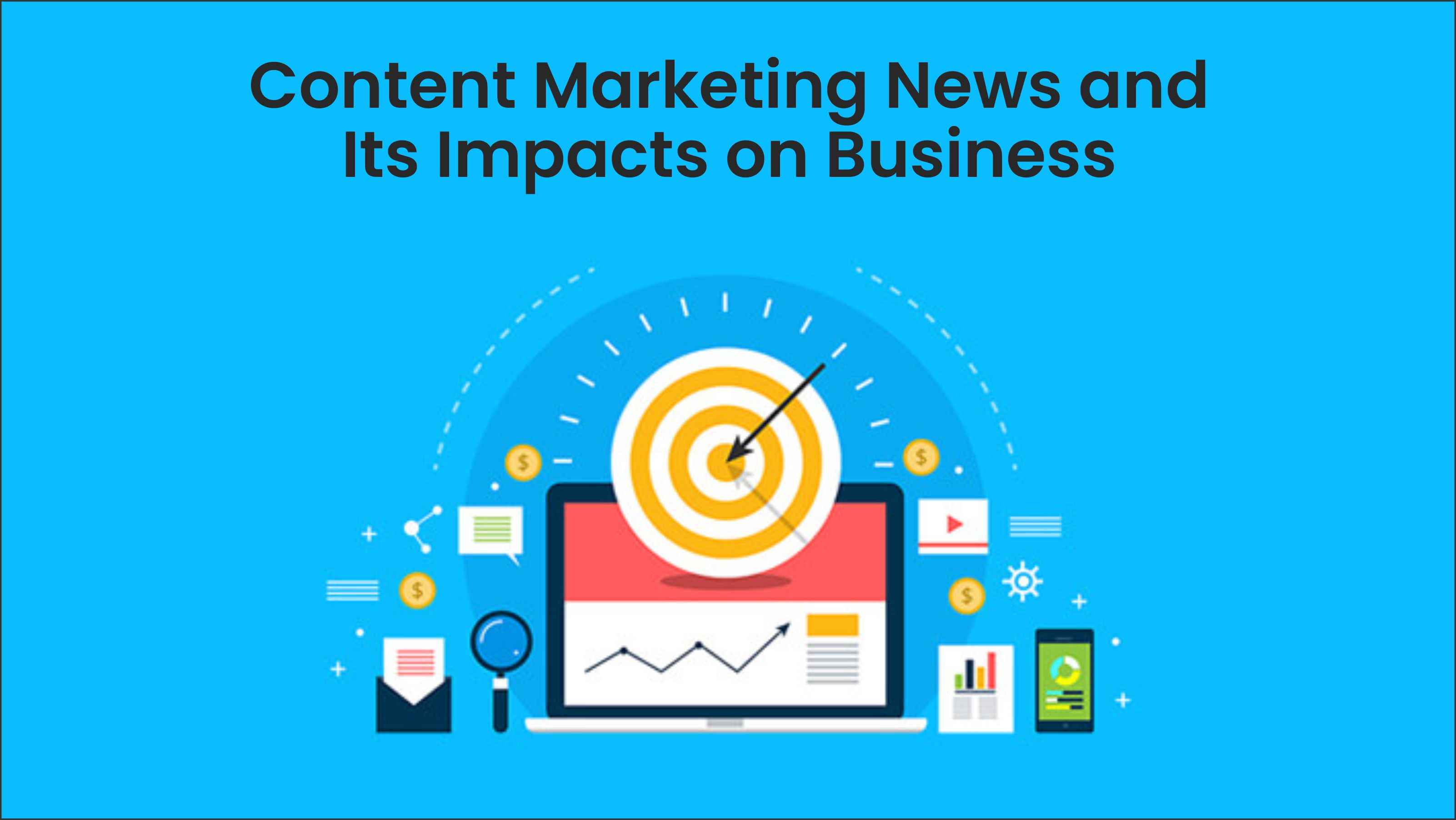
In the fast-paced and ever-changing world of digital marketing, content marketing has emerged as a cornerstone strategy for businesses seeking to connect with their audiences in meaningful and impactful ways. From small startups to large corporations, companies are increasingly recognizing the power of high-quality, relevant content in driving engagement, building brand awareness, and ultimately boosting their bottom lines. As we delve into the latest news and trends in content marketing, it becomes clear that this strategy is not just a fleeting trend but a fundamental aspect of modern business operations.
Content marketing is not a new concept; however, its methods and importance have evolved significantly over the years. Originally, businesses used content marketing in the form of newsletters, brochures, and printed advertisements. With the advent of the internet, the scope and scale of content marketing expanded dramatically.
Today, content marketing encompasses a wide array of digital formats, including blogs, videos, social media posts, infographics, podcasts, and more. The primary goal remains the same: to create and distribute valuable, relevant, and consistent content to attract and retain a clearly defined audience. This approach helps businesses establish authority, build trust, and nurture relationships with their customers.
Several key trends are currently shaping the content marketing landscape. These trends reflect the evolving preferences of consumers and the innovative ways in which businesses are leveraging content to achieve their marketing goals.
Video content continues to dominate the digital space, with platforms like YouTube, TikTok, and Instagram leading the charge. According to a report by Cisco, video will account for 82% of all internet traffic by 2022. This trend is driven by consumers' preference for visually engaging content that is easy to consume and share.
Businesses are capitalizing on this trend by creating diverse types of video content, including explainer videos, product demonstrations, behind-the-scenes glimpses, and customer testimonials. Live streaming has also gained popularity, allowing brands to interact with their audience in real-time and foster a sense of community.
Personalization has become a key focus in content marketing, with businesses using data analytics to deliver tailored content experiences. Hyper-targeted content is designed to address the specific needs, preferences, and behaviors of individual consumers, making them feel valued and understood.
Tools such as artificial intelligence (AI) and machine learning enable businesses to analyze customer data and predict future behaviors. This allows for the creation of highly personalized content that resonates with the audience, leading to higher engagement and conversion rates.
Interactive content, such as quizzes, polls, surveys, and interactive infographics, is gaining traction as a way to engage users more deeply. Unlike passive content, interactive elements require active participation from the audience, making the experience more engaging and memorable.
Businesses are leveraging interactive content to increase user engagement, collect valuable data, and provide personalized recommendations. This type of content is particularly effective in capturing attention and driving user interaction on social media platforms.
With the rise of smart speakers and voice assistants like Alexa, Siri, and Google Assistant, optimizing content for voice search has become crucial. Voice search queries tend to be more conversational and longer than text-based searches, requiring a different approach to content creation.
Businesses are adapting by creating content that answers common voice search queries in a natural, conversational tone. This involves optimizing for long-tail keywords and ensuring that content is structured in a way that voice assistants can easily interpret and deliver to users.
The strategic use of content marketing has far-reaching impacts on various aspects of a business. From enhancing brand reputation to driving sales, the benefits are significant and multifaceted.
Consistently producing high-quality content helps businesses establish themselves as authorities in their respective industries. By providing valuable information, insights, and solutions, companies can build trust and credibility with their audience.
For example, a technology company that regularly publishes in-depth articles on the latest industry trends and innovations will be perceived as a thought leader. This enhanced brand authority can lead to increased brand awareness, as more consumers and businesses turn to them for reliable information.
Engaging content fosters a deeper connection between a brand and its audience. By addressing the needs and interests of consumers, businesses can create a loyal customer base that feels understood and appreciated.
Interactive content, personalized recommendations, and engaging social media posts all contribute to higher levels of customer engagement. This, in turn, can lead to increased customer loyalty and repeat business, as satisfied customers are more likely to return and make additional purchases.
Effective content marketing strategies are instrumental in generating leads and driving conversions. By creating content that guides consumers through the buyer’s journey, businesses can nurture leads and move them closer to making a purchase.
For instance, a well-structured content funnel might start with an educational blog post that addresses a potential customer's pain point, followed by a detailed eBook that offers more in-depth solutions, and finally, a case study that showcases successful implementations of the product or service. Each piece of content serves to build trust and provide value, ultimately leading to higher conversion rates.
Content marketing plays a crucial role in improving a website's search engine optimization (SEO). By producing relevant, high-quality content that incorporates targeted keywords, businesses can improve their search engine rankings and attract more organic traffic.
Regularly updated blogs, optimized landing pages, and comprehensive resource centers help search engines understand the relevance and authority of a website. This increased visibility in search results can drive a steady stream of organic traffic, reducing reliance on paid advertising.
Compared to traditional advertising methods, content marketing is often more cost-effective. While it requires an investment of time and resources to create high-quality content, the long-term benefits and ROI can be substantial.
Content marketing assets, such as blog posts, videos, and infographics, can continue to attract and engage customers long after they are published. This evergreen nature of content allows businesses to reap ongoing benefits without the need for continuous investment in new campaigns.
Several businesses have successfully leveraged content marketing to achieve remarkable results. Here are a few notable examples:
HubSpot, a leading provider of inbound marketing and sales software, has built its brand on the foundation of content marketing. Through its extensive blog, resource library, and educational content, HubSpot attracts millions of visitors each month. By offering valuable insights and tools, they have established themselves as authorities in the marketing industry, driving significant traffic and generating high-quality leads.
Coca-Cola’s content marketing strategy focuses on storytelling and creating emotional connections with their audience. Through campaigns like “Share a Coke” and various social media initiatives, Coca-Cola engages consumers with relatable and shareable content. Their emphasis on storytelling has helped them maintain a strong brand presence and foster loyalty among their customers.
Airbnb uses content marketing to showcase unique travel experiences and destinations. Their blog, “Airbnb Magazine,” features stories from hosts and travelers, providing inspiration and tips for potential guests. By highlighting authentic experiences and local cultures, Airbnb effectively engages its audience and promotes its platform.
Content marketing has become an indispensable tool for businesses in the digital age. By staying attuned to the latest trends and leveraging innovative strategies, companies can create meaningful connections with their audiences, enhance brand authority, and drive business growth. As the landscape continues to evolve, businesses that prioritize high-quality, relevant content will be well-positioned to succeed in an increasingly competitive market.
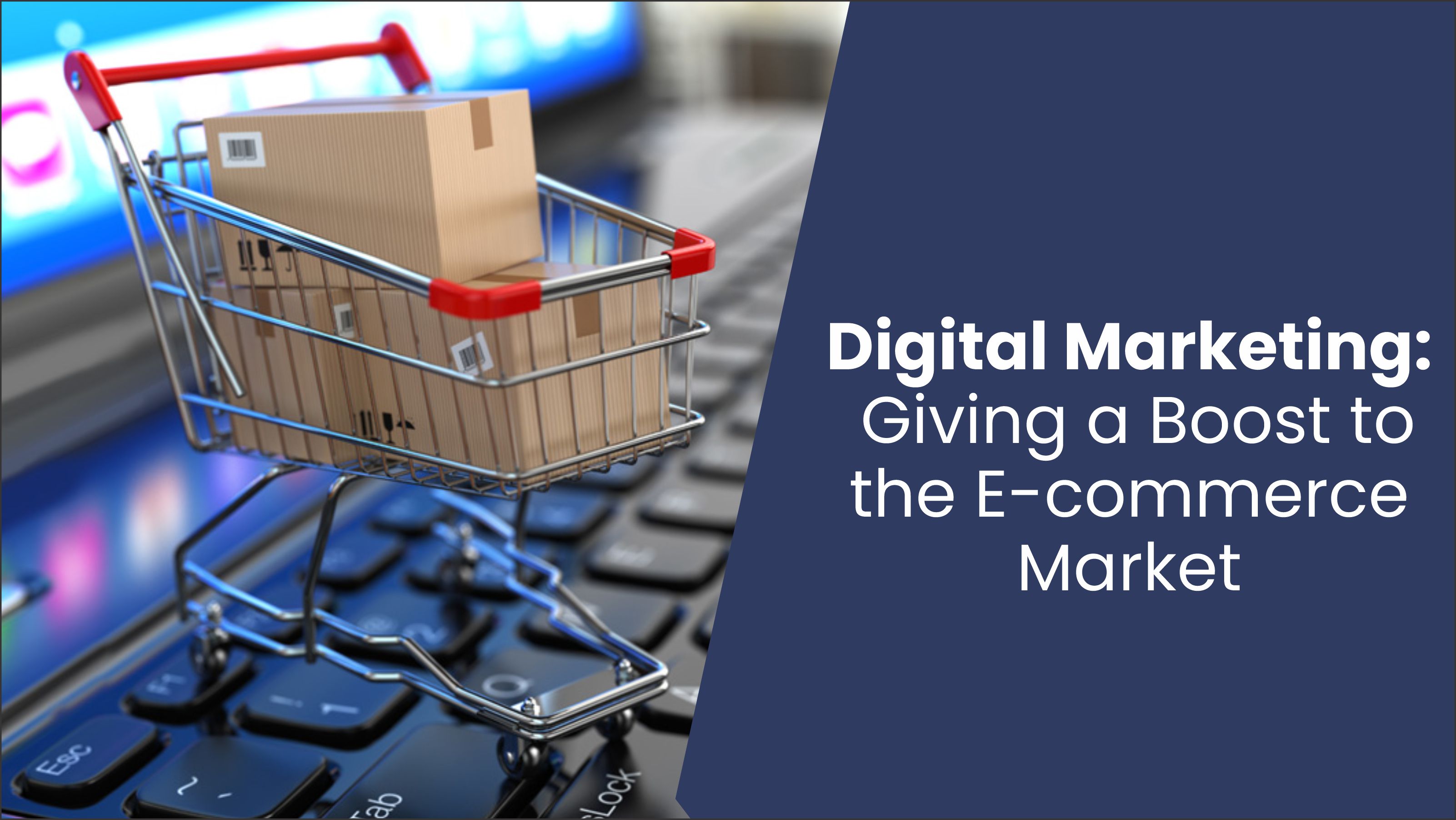
In the ever-evolving landscape of commerce, digital marketing has emerged as a crucial driver of growth, particularly for the e-commerce sector. As online shopping continues to gain momentum, digital marketing strategies are becoming increasingly sophisticated, offering e-commerce businesses unprecedented opportunities to reach and engage with consumers. This dynamic interplay between digital marketing and e-commerce is transforming the retail industry, creating a vibrant marketplace where businesses can thrive and consumers can enjoy unparalleled convenience and choice.
The e-commerce market has experienced exponential growth over the past decade, a trend that has been significantly accelerated by the global COVID-19 pandemic. With lockdowns and social distancing measures in place, consumers turned to online shopping in unprecedented numbers. According to a report by eMarketer, global e-commerce sales reached $4.28 trillion in 2020, a 27.6% increase from the previous year. This surge in online shopping is expected to continue, with projections indicating that e-commerce sales will account for 22% of all retail sales worldwide by 2023.
Digital marketing encompasses a range of online strategies and tactics designed to attract, engage, and convert consumers. From search engine optimization (SEO) and pay-per-click (PPC) advertising to social media marketing and content marketing, these strategies are essential for e-commerce businesses looking to stand out in a crowded market. Here’s how digital marketing is boosting the e-commerce market:
SEO and PPC are foundational elements of digital marketing that significantly enhance the visibility of e-commerce websites. SEO involves optimizing a website to rank higher in search engine results pages (SERPs), making it easier for potential customers to find products and services. On the other hand, PPC advertising allows businesses to bid for ad placements in search engine sponsored links, ensuring immediate visibility.
By leveraging these strategies, e-commerce businesses can reach a broader audience. For instance, a well-optimized website can attract organic traffic from search engines, while targeted PPC campaigns can drive immediate traffic to specific product pages. This increased visibility translates to higher chances of attracting potential customers and boosting sales.
One of the most significant advantages of digital marketing is its ability to deliver personalized experiences. Through data analytics and customer insights, e-commerce businesses can tailor their marketing efforts to individual preferences and behaviors. Email marketing campaigns, for example, can be customized to include personalized product recommendations based on a customer’s previous purchases and browsing history.
Social media platforms like Facebook and Instagram offer sophisticated targeting options, allowing businesses to create highly personalized ads. These ads can be tailored based on demographics, interests, and online behaviors, ensuring that the right message reaches the right audience at the right time. Personalization not only enhances the shopping experience but also increases customer loyalty and retention.
Social media has become an indispensable tool for e-commerce businesses to engage with their customers. Platforms such as Facebook, Instagram, Twitter, and TikTok offer unique opportunities to interact with consumers in real-time, build brand awareness, and foster a sense of community.
Through social media marketing, businesses can showcase their products, share customer testimonials, and run promotional campaigns. Influencer marketing, in particular, has proven to be highly effective in driving sales. By partnering with influencers who have a large and engaged following, e-commerce businesses can tap into new audiences and build credibility.
Content marketing is a strategic approach focused on creating and distributing valuable, relevant, and consistent content to attract and retain a clearly defined audience. For e-commerce businesses, this means producing content that resonates with their target market, such as blog posts, videos, infographics, and guides.
Quality content not only helps in establishing authority and trust but also plays a crucial role in SEO. Well-crafted content that incorporates relevant keywords can improve search engine rankings, drive organic traffic, and increase the likelihood of converting visitors into customers. Additionally, content marketing helps in educating consumers, answering their questions, and addressing their pain points, ultimately guiding them through the purchasing journey.
Email marketing remains one of the most effective digital marketing strategies for e-commerce businesses. With an ROI of $42 for every dollar spent, it’s a powerful tool for driving sales and building customer relationships. Through targeted email campaigns, businesses can keep their customers informed about new products, special offers, and upcoming sales.
Automation tools have further enhanced the effectiveness of email marketing. Automated workflows can trigger emails based on customer behavior, such as abandoned cart reminders, post-purchase follow-ups, and re-engagement campaigns. These personalized touchpoints help in nurturing leads and encouraging repeat purchases.
The digital marketing landscape is rich with data, providing e-commerce businesses with valuable insights into consumer behavior and campaign performance. Tools like Google Analytics, Facebook Insights, and various CRM systems allow businesses to track metrics such as website traffic, conversion rates, customer demographics, and more.
By analyzing this data, businesses can make informed decisions about their marketing strategies. For instance, if a particular product page has a high bounce rate, it may indicate that the page needs optimization. Similarly, A/B testing of ad creatives and landing pages can reveal which versions are most effective in driving conversions. This data-driven approach ensures that marketing efforts are continuously refined and optimized for maximum impact.
Several e-commerce businesses have leveraged digital marketing to achieve remarkable success. Here are a few notable examples:
As the world’s largest online retailer, Amazon’s success is a testament to the power of digital marketing. The company uses a combination of SEO, PPC, email marketing, and personalized recommendations to drive sales. Amazon’s sophisticated algorithms analyze customer data to deliver personalized shopping experiences, while their extensive use of PPC advertising ensures visibility for their products.
Warby Parker, an eyewear company, has effectively used social media and content marketing to build its brand and engage with customers. Their unique content, including blog posts and videos, educates consumers about eye health and fashion trends. Additionally, their social media campaigns and influencer partnerships have helped them reach a wider audience and drive sales.
Dollar Shave Club’s viral video marketing campaign is a prime example of how creative content can drive e-commerce success. Their humorous and engaging video content captured the attention of millions, resulting in a significant boost in subscriptions. The company’s use of targeted email marketing and personalized product recommendations further contributed to their growth.
Digital marketing has undeniably given a significant boost to the e-commerce market. By enhancing visibility, personalizing customer experiences, engaging through social media, leveraging content marketing, executing targeted email campaigns, and making data-driven decisions, e-commerce businesses can thrive in an increasingly competitive landscape. As technology continues to advance and consumer behavior evolves, digital marketing will remain a critical component of e-commerce success, driving growth and innovation in the years to come.
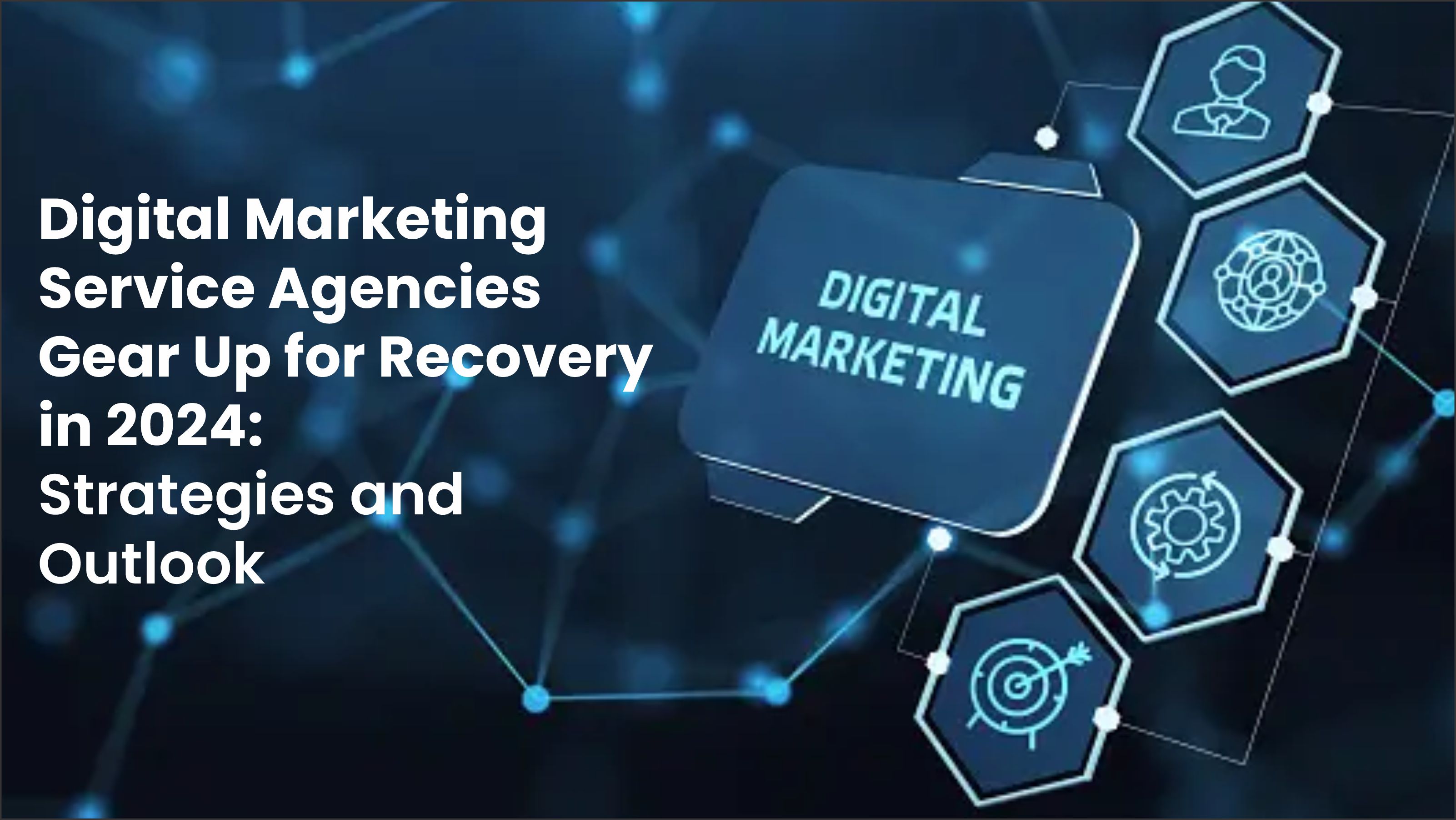
As the global economy rebounds from the tumultuous events of recent years, digital marketing service agencies are poised for a resurgence in 2024. Fueled by technological innovation, shifting consumer behaviours, and a renewed focus on digital transformation, these agencies are charting a course for recovery and growth. This comprehensive news piece explores the strategies, trends, and outlook shaping the landscape of digital marketing services in 2024.
The past few years have presented unprecedented challenges for digital marketing agencies, as businesses grappled with the repercussions of the COVID-19 pandemic, economic uncertainties, and geopolitical tensions. Budget constraints, shifting consumer priorities, and disrupted supply chains necessitated recalibration of marketing strategies, prompting agencies to pivot towards digital channels and agile methodologies.
Despite the setbacks, the pandemic accelerated the pace of digital adoption, highlighting the importance of online presence, e-commerce capabilities, and data-driven marketing strategies. This paradigm shift created opportunities for digital marketing agencies to showcase their expertise in navigating the digital landscape and driving meaningful results for clients
As digital marketing service agencies head for recovery in 2024, they are doubling down on key strategies and focus areas to capitalize on emerging trends and meet the evolving needs of clients. Some of the prominent strategies include:
Data-Driven Insights: Leveraging data analytics and artificial intelligence to gain actionable insights into consumer behaviour, market trends, and campaign performance. By harnessing the power of data, agencies can optimize targeting, personalize messaging, and maximize return on investment for clients.
Integrated Campaigns: Embracing a holistic approach to marketing by integrating multiple channels and touchpoints to create cohesive and immersive brand experiences. From social media and content marketing to search engine optimization and email marketing, agencies are orchestrating campaigns that resonate with audiences across various platforms.
Innovation and Creativity: Nurturing a culture of innovation and creativity to stay ahead of the curve in a competitive landscape. From interactive content and immersive experiences to emerging technologies such as augmented reality and virtual reality, agencies are pushing the boundaries of creativity to captivate audiences and drive engagement.
Client-Centric Solutions: Prioritizing client satisfaction and collaboration by offering tailored solutions, transparent communication, and measurable results. By understanding the unique goals, challenges, and opportunities of each client, agencies can forge long-term partnerships built on trust and mutual success.
In 2024, digital marketing service agencies are embrace emerging trends and seizing new opportunities to expand their offerings and stay relevant in a dynamic market environment. Some of the notable trends include:
AI-Powered Marketing: The integration of artificial intelligence and machine learning algorithms to automate repetitive tasks, personalize marketing efforts, and optimize campaign performance. AI-driven tools and platforms enable agencies to deliver hyper-targeted messaging, predictive analytics, and real-time optimization, enhancing efficiency and effectiveness.
Voice Search Optimization: With the proliferation of voice-enabled devices and virtual assistants, optimizing content for voice search has become a priority for agencies. By optimizing for natural language queries and conversational interfaces, agencies can improve visibility in voice search results and capitalize on the growing adoption of voice technology.
Influencer Marketing Evolution: Influencer marketing continues to evolve, with agencies exploring new strategies, metrics, and platforms to maximize ROI and authenticity. From nano-influencers and micro-influencers to long-term partnerships and performance-based models, agencies are innovating in influencer collaboration to drive brand awareness and engagement.
E-commerce Acceleration: The acceleration of e-commerce adoption has opened up opportunities for agencies to support businesses in establishing and growing their online presence. From Shopify development and Amazon advertising to conversion rate optimization and fulfilment logistics, agencies are providing end-to-end e-commerce solutions to drive sales and revenue.
Looking ahead, the outlook for digital marketing service agencies in 2024 is optimistic, albeit with some challenges on the horizon. The recovery from global events, the proliferation of digital channels, and the evolving regulatory landscape pose both opportunities and complexities for agencies navigating the digital landscape.
Data Privacy and Security: Heightened concerns around data privacy and security regulations necessitate compliance measures and ethical practices to safeguard consumer data and maintain trust.
Talent Acquisition and Retention: The demand for skilled professionals in digital marketing disciplines such as data analysis, content creation, and technical SEO continues to outstrip supply, posing challenges for talent acquisition and retention.
Adapting to Market Dynamics: Rapid technological advancements, changing consumer behaviours, and market disruptions require agility and adaptability from agencies to stay ahead of the curve and deliver value to clients.
In conclusion, as digital marketing service agencies head for recovery in 2024, they are poised to capitalize on emerging trends, innovate in their offerings, and forge deeper partnerships with clients. By embracing data-driven insights, creativity, and client-centric solutions, agencies can navigate the challenges and opportunities of the digital landscape, driving growth and success in the years to come.